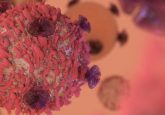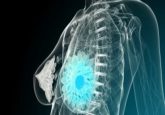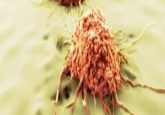Oncotype DX reduces chemotherapy rates post-surgery in younger women with breast cancer
In a retrospective population-based study, researchers from The University of Texas MD Anderson Cancer Center (TX, USA) have discovered that the diagnostic tool Oncotype DX® (Genomic Health, Inc., CA, USA) is associated with a reduction in chemotherapy use among younger patients, but not among those greater than 66 years of age. The findings of the study were recently presented at the San Antonio Breast Cancer Symposium (9–13 December 2014, TX, USA).
Oncotype DX is a 21-gene assay that helps estimate recurrence risk in women suffering from early-stage breast cancer, helping to determine those patients who will benefit from adjuvant chemotherapy.
The study’s lead author Mariana Chavez Mac Gregor (The University of Texas MD Anderson Cancer Center) and her team believe that most women who are diagnosed with early-stage breast cancer would be potential candidates for the assay. Consequently, as the availability of such technology increases, it is increasingly important that such tests are used appropriately.
Chavez Mac Gregor commented: “The results allow physicians to stratify this patient group into low, intermediate and high risk of recurrence, as well as understand a woman’s potential personal benefit from chemotherapy in the adjuvant setting. With this study, we wanted to evaluate the use of Oncotype DX in the general population to see if there’s a relationship between the use of the test and chemotherapy decrease in those patients.”
For the study, the researchers identified 112,522 patients from the MarketScan research database younger than 65 years of age, and an additional 54,186 individuals from the SEER-Medicare database older than 66 years.
In the cohort of younger patients, 13.6% overall underwent Oncotype DX testing, and in those that met the test criteria, 60% underwent testing. It was also noted that the assay was associated with a reduction in the use of adjuvant chemotherapy.
In the cohort of older patients, overall 7.2% of patients underwent Oncotype DX testing; among those patients with hormone receptor-positive, lymph node-negative breast cancer, 67.1% underwent testing. However, in this older population, use of the assay was not associated with a statistical reduction in the use of adjuvant chemotherapy.
“In the younger group of breast cancer patients for whom the test is appropriate, and when used in this setting, we’re finding an important reduction in chemotherapy use. The contrast between older and younger patients’ results did surprise us. However, generally, older breast cancer patients receive much less chemotherapy because of their age and because they often have additional comorbidities. Perhaps we will see that impact with time,” commented Chavez Mac Gregor.
Between 2005, when the assay was first introduced, and 2012, the researchers found that the use of the assay increased in both groups. Furthermore, they noted increased use of the assay in women with node-positive disease, particularly in the cohort of younger patients.
While these results show promise for Oncotype DX’s use in this setting, the usefulness of the assay will need to be tested prospectively and an international clinical trial is ongoing.
In the future, the team plan to further evaluate use of the assay in breast cancer patients under the age of 40 years, since there are relatively few data on its benefit in younger patients. Moreover, the researchers hope to improve understanding of the relationship and patterns for physicians ordering the test, through SEER’s link to the American Medical Association.




